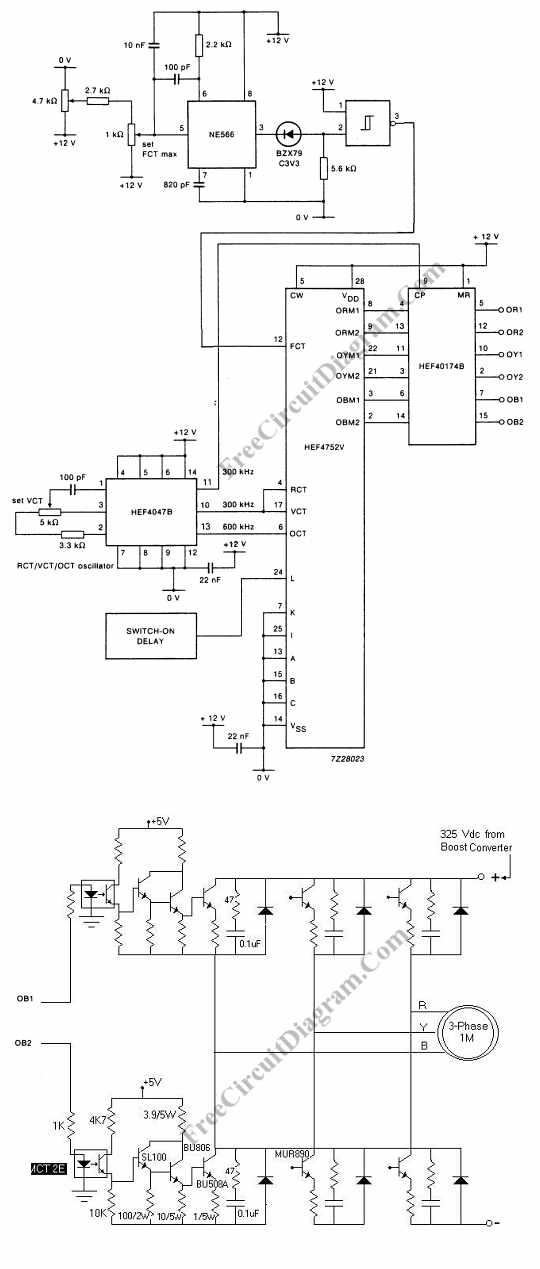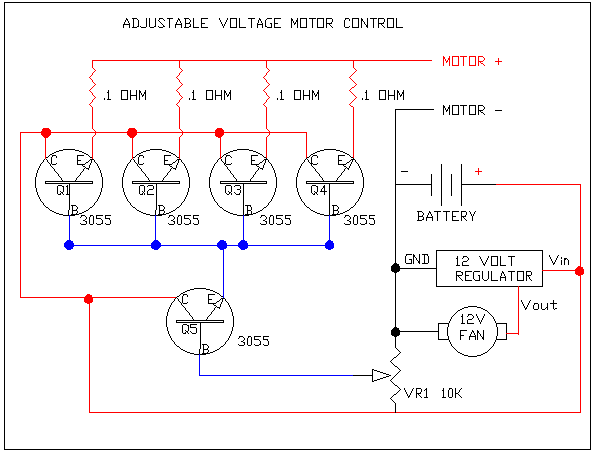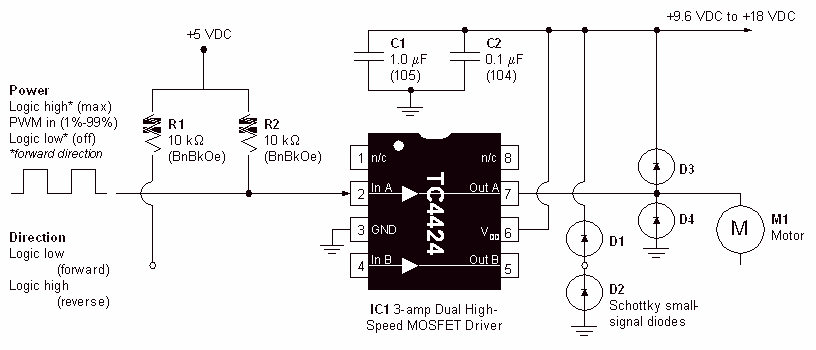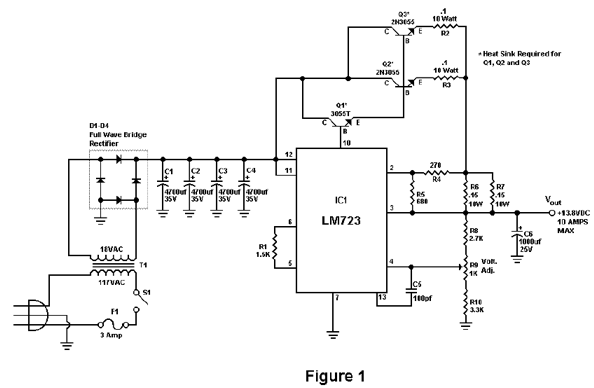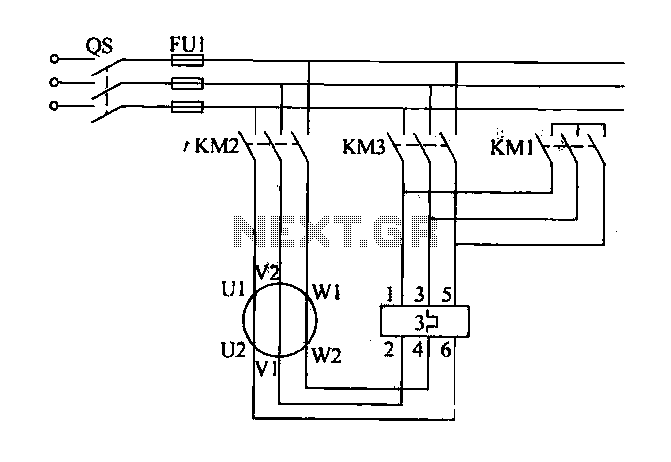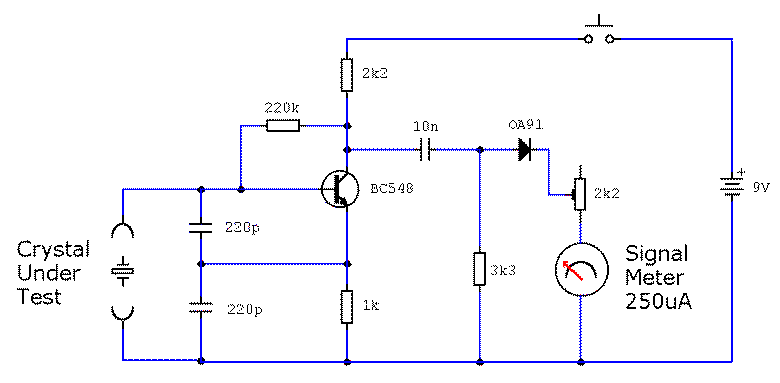
Stepper Motor Circuits
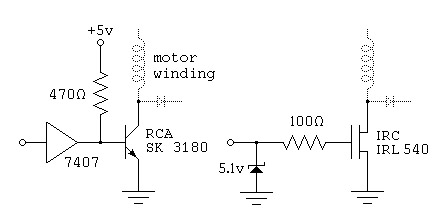
To control a stepper motor, each winding must be energized individually in a specific and timed sequence. This energization is carried out by a driver circuit, which acts as an amplifier. The timing is managed by an indexer circuit, while the operational objectives (such as moving forward, backward, braking, or coasting) are determined by an external user interface, such as a computer or joystick. The circuits for driving unipolar and bipolar stepper motors differ due to the absence of a "center tap" in bipolar stepper motors. However, bipolar drivers can be adapted to drive unipolar stepper motors with minor modifications. It is essential to include protective measures in the driver circuit to guard against voltage spikes, as the motor windings are inductors that generate a brief surge of voltage when power is switched off. To mitigate this risk, a diode should be placed in parallel with each winding, ensuring that the diode can handle the winding current. Various switching technologies can be employed for the switches, including power Darlington transistors and power field-effect transistors (FETs). For driving a full stepper motor with multiple coils, individual circuits can be constructed for each coil, or an integrated chip can be utilized. One such chip is the DS2003, a Darlington array that is suitable for total currents of less than 500 milliamps for each winding. Bipolar stepper drivers employ H-bridges to energize the motor windings, allowing the current direction to be reversed. Each winding typically requires four transistors in an H-bridge configuration, although they are often prewired to require only two inputs for simplified pulse generation and short circuit protection. It is feasible to drive a bipolar motor using a unipolar motor circuit, with the primary distinction being the absence of center winding taps for power connection. There are several methods to generate the index pulses required for stepper motor operation, which can be accomplished using a microprocessor or an integrated circuit. Given the complexity of the calculations, a microprocessor may struggle to perform additional tasks while generating pulse trains. Fortunately, a variety of inexpensive microcontrollers are available that can serve as dedicated indexers. The L297 is a 20-pin DIP chip specifically designed to control both unipolar and bipolar stepper motors, managing two H-bridges to power two windings. Its inputs regulate the motor's speed and direction, with the A and B outputs corresponding to the X and Y inputs of the first winding's H-bridge, while the C and D outputs correspond to those of the second winding.
The operation of stepper motors relies heavily on precise control of the winding energization sequence. The driver circuit, typically composed of transistors or integrated circuits, amplifies the control signals and ensures that the correct winding is energized at the appropriate time. For unipolar motors, the circuit configuration allows for a straightforward connection to the center tap, while bipolar motors require a more complex H-bridge arrangement to manage the direction of current flow through the windings. The inclusion of diodes in the circuit is crucial for protecting components from back EMF generated when the inductive windings are de-energized.
The choice of switching technology can significantly influence the performance and efficiency of the driver circuit. Power Darlington transistors offer high current gain, making them suitable for applications requiring substantial current, while power FETs provide lower on-resistance and faster switching speeds, which can enhance overall system responsiveness.
When implementing a driver circuit for a stepper motor, considerations such as the maximum current rating, thermal management, and switching frequency must be addressed to ensure reliable operation. Integrated circuits like the DS2003 and L297 provide a compact solution for controlling stepper motors, simplifying the design process while offering built-in features for managing speed and direction. The L297, in particular, facilitates the control of both unipolar and bipolar motors, making it a versatile choice for various applications.
In summary, stepper motor control requires a well-designed driver circuit that incorporates protective measures against voltage spikes, utilizes appropriate switching technology, and can be efficiently managed using dedicated indexer circuits or microcontrollers. The integration of these components into a cohesive schematic will enable precise control of stepper motors for a wide range of applications.To control a stepper motor, you have to energize each winding individually in a specific and timed order. The energizing is accomplished by a driver circuit (an amplifier). The timing is performed by an indexer circuit and the objective (go forward, go backward, brake, coast, etc.
) is controlled by some external user interface, such as a computer or joystick. The figure below shows this process. The circuits for driving unipolar and bipolar stepper motors differ because bipolar stepper motors don`t have a "center tap. " However, it is possible to use bipolar drivers to drive unipolar steppers after some small modifications.
Care must be taken in the driver circuit to protect against voltage spikes. Because the motor windings are inductors, switching off the power to the winding produces a short burst of voltage. To protect against this, always put a diode in parallel with the winding, making sure the diode can handle the winding current.
This is shown in the following figure. For the switches, any kind of switching technology can be used. The following figure shows two such switches. The first one uses a power darlington transistor and the second one uses a power field effect transistor. For driving a full stepper motor, with multiple coils, you can either build each of the above circuits individually, or you can use a integrated chip.
One such chip is the DS2003, which is a darlington array, and is shown below. This chip can be used when the total current to each winding is less than 500 milliamps. Bipolar stepper drivers use H-bridges to energize the windings of the motor. H-bridges allow you to choose the direction of the current through the winding. Using an H-bridge configuration, there are four transistors for each winding as shown in the first figure below. However, most of the time they are prewired together so that only two inputs are needed. This makes generating pulses easier and also serves to protect against short circuits. This circuit is shown in the second figure below. You should be able to drive a bipolar motor with a unipolar motor circuit. The only difference is that there are no center winding taps to connect to the power source. Somebody correct me There are many methods of producing the index pulses needed to drive stepper motors.
This can either be done using a microprocessor or an integrated circuit. The calculations will most likely be so burdensome that the microprocessor would be unable to do any other calculations while producing the pulse trains. However, there are many cheap microcontrollers available these days and they could be used as dedicated indexers.
The L297 is a 20-pin DIP chip that was designed specifically to control either unipolar or bipolar stepper motors. It will control two H-bridges to power two windings. Its inputs control the speed and direction of the motor. The diagram below shows the typical setup of the circuit. The A and B outputs would correspond to the X and Y inputs on the H-bridge of the first winding (see above).
Likewise, the C and D outputs would correspond to the X and Y inputs on the second winding. 🔗 External reference
The operation of stepper motors relies heavily on precise control of the winding energization sequence. The driver circuit, typically composed of transistors or integrated circuits, amplifies the control signals and ensures that the correct winding is energized at the appropriate time. For unipolar motors, the circuit configuration allows for a straightforward connection to the center tap, while bipolar motors require a more complex H-bridge arrangement to manage the direction of current flow through the windings. The inclusion of diodes in the circuit is crucial for protecting components from back EMF generated when the inductive windings are de-energized.
The choice of switching technology can significantly influence the performance and efficiency of the driver circuit. Power Darlington transistors offer high current gain, making them suitable for applications requiring substantial current, while power FETs provide lower on-resistance and faster switching speeds, which can enhance overall system responsiveness.
When implementing a driver circuit for a stepper motor, considerations such as the maximum current rating, thermal management, and switching frequency must be addressed to ensure reliable operation. Integrated circuits like the DS2003 and L297 provide a compact solution for controlling stepper motors, simplifying the design process while offering built-in features for managing speed and direction. The L297, in particular, facilitates the control of both unipolar and bipolar motors, making it a versatile choice for various applications.
In summary, stepper motor control requires a well-designed driver circuit that incorporates protective measures against voltage spikes, utilizes appropriate switching technology, and can be efficiently managed using dedicated indexer circuits or microcontrollers. The integration of these components into a cohesive schematic will enable precise control of stepper motors for a wide range of applications.To control a stepper motor, you have to energize each winding individually in a specific and timed order. The energizing is accomplished by a driver circuit (an amplifier). The timing is performed by an indexer circuit and the objective (go forward, go backward, brake, coast, etc.
) is controlled by some external user interface, such as a computer or joystick. The figure below shows this process. The circuits for driving unipolar and bipolar stepper motors differ because bipolar stepper motors don`t have a "center tap. " However, it is possible to use bipolar drivers to drive unipolar steppers after some small modifications.
Care must be taken in the driver circuit to protect against voltage spikes. Because the motor windings are inductors, switching off the power to the winding produces a short burst of voltage. To protect against this, always put a diode in parallel with the winding, making sure the diode can handle the winding current.
This is shown in the following figure. For the switches, any kind of switching technology can be used. The following figure shows two such switches. The first one uses a power darlington transistor and the second one uses a power field effect transistor. For driving a full stepper motor, with multiple coils, you can either build each of the above circuits individually, or you can use a integrated chip.
One such chip is the DS2003, which is a darlington array, and is shown below. This chip can be used when the total current to each winding is less than 500 milliamps. Bipolar stepper drivers use H-bridges to energize the windings of the motor. H-bridges allow you to choose the direction of the current through the winding. Using an H-bridge configuration, there are four transistors for each winding as shown in the first figure below. However, most of the time they are prewired together so that only two inputs are needed. This makes generating pulses easier and also serves to protect against short circuits. This circuit is shown in the second figure below. You should be able to drive a bipolar motor with a unipolar motor circuit. The only difference is that there are no center winding taps to connect to the power source. Somebody correct me There are many methods of producing the index pulses needed to drive stepper motors.
This can either be done using a microprocessor or an integrated circuit. The calculations will most likely be so burdensome that the microprocessor would be unable to do any other calculations while producing the pulse trains. However, there are many cheap microcontrollers available these days and they could be used as dedicated indexers.
The L297 is a 20-pin DIP chip that was designed specifically to control either unipolar or bipolar stepper motors. It will control two H-bridges to power two windings. Its inputs control the speed and direction of the motor. The diagram below shows the typical setup of the circuit. The A and B outputs would correspond to the X and Y inputs on the H-bridge of the first winding (see above).
Likewise, the C and D outputs would correspond to the X and Y inputs on the second winding. 🔗 External reference
Warning: include(partials/cookie-banner.php): Failed to open stream: Permission denied in /var/www/html/nextgr/view-circuit.php on line 713
Warning: include(): Failed opening 'partials/cookie-banner.php' for inclusion (include_path='.:/usr/share/php') in /var/www/html/nextgr/view-circuit.php on line 713
